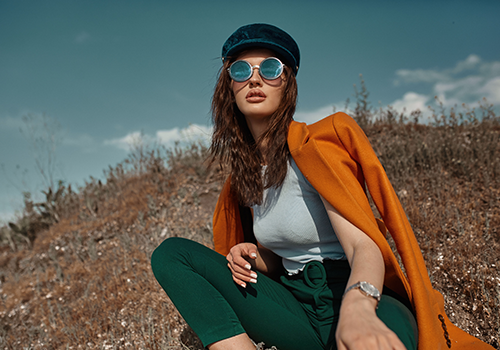
Have you heard of colour blocking? Colour blocking is when colours that are opposites on the colour wheel are paired together for an interesting and complementary colour combination. The process of colour blocking is as simple as it sounds - adding blocks of solid colours to one outfit. It is commonly associated in fashion as a trend that originated from the artwork of Piet Mondrian, a Dutch painter. In the fashion world, it first began with a dress by Yves St. Laurent way back in 1946. Yves St. Laurent was inspired by Mondrian's work and brought to life his colour blocking idea through an iconic dress with Mondrian's name. How about trying this colour blocking look? You can also try wall paint in two contrasting shades for your favourite walls to create a statement.